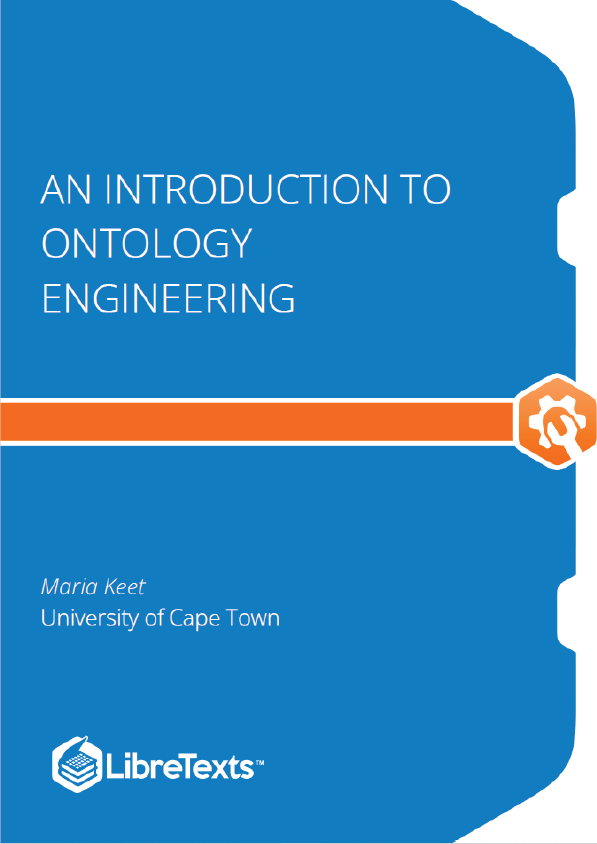Aims and Synopsis
The principal aim of this textbook is to provide the student with a comprehensive introductory overview of ontology engineering. A secondary aim is to provide hands-on experience in ontology development that illustrate the theory, such as language features, automated reasoning, and top-down and bottom-up ontology development with methods and methodologies.
This textbook covers material such that, upon completion, the student:
- has a general understanding of the notion of what ontologies and knowledge bases are, what they can be used for, how, and when not;
- has obtained an understanding of the, currently, main ontology languages— OWL and its underlying Description Logics languages—in order to represent the knowledge in ontologies formally and to reason over them, and have a basic understanding of what an automated reasoner does;
- can confidently use an Ontology Development Environment;
- can confidently use methods and methodologies to develop ontologies, including the top-down approach with foundational ontologies and bottom-up using non-ontological resources such as relational databases, natural language or thesauri; and
- has become acquainted with several major applications and application scenarios, such as the Semantic Web Technologies for ontologies, and has had a taste of the research trends in the field.
Interwoven in the aims is skills development for a 4th year/honours project or masters dissertation. The students will become familiar with reading scientific literature and will gain experience in report writing and presenting their work to their peers, in particular when carrying out the two suggested assignments.
Assessment
There are review questions at the end of each chapter, whose answers can be found in the text of that chapter. Exercises are intended to obtain practical hands-on experiences and sometimes challenge the student. A selection of the exercises’ answers is included in the appendix. Assignments require the student to integrate the material and, especially for the mini project, delve deeper into a specific subtopic.
2.1: Prelude to Ontology Engineering
To place “ontologies” in its right context, the first two questions one has to ask and answer are:
- What is an ontology?
- What is it good for? (or: what problems does it solve?)
A very short and informal way of clarifying what “an ontology” in computing is, is that it is a text file containing structured knowledge about a particular subject domain, and this file is used as a component of a so-called ‘intelligent’ information system. Fancy marketing talk may speak of some of those ontology-driven information systems as “like a database, on steroids!” and similar. Ontologies have been, and are being, used to solve data integration problems by providing the common, agreed-upon vocabulary which is then used in a way so that the software understands that, say, an entity Student of a relational database DB actually means the same thing as Advanced Learners in some application software OO . Tools can then be developed to link up those two applications and exchange information smoothly thanks to the shared vocabulary. Over time, people figured out other ways to use ontologies and contribute to solving entirely different problems. For instance, a question-answering system that lets the scientist chat with a library chatterbot to more easily find relevant literature (compared to string and keyword matching), automatically find a few theoretically feasible candidate rubber molecules out of very many (compared to painstaking trial-and-error work in the laboratory), and automated discovery of a new enzyme (outperforming the human experts!).











